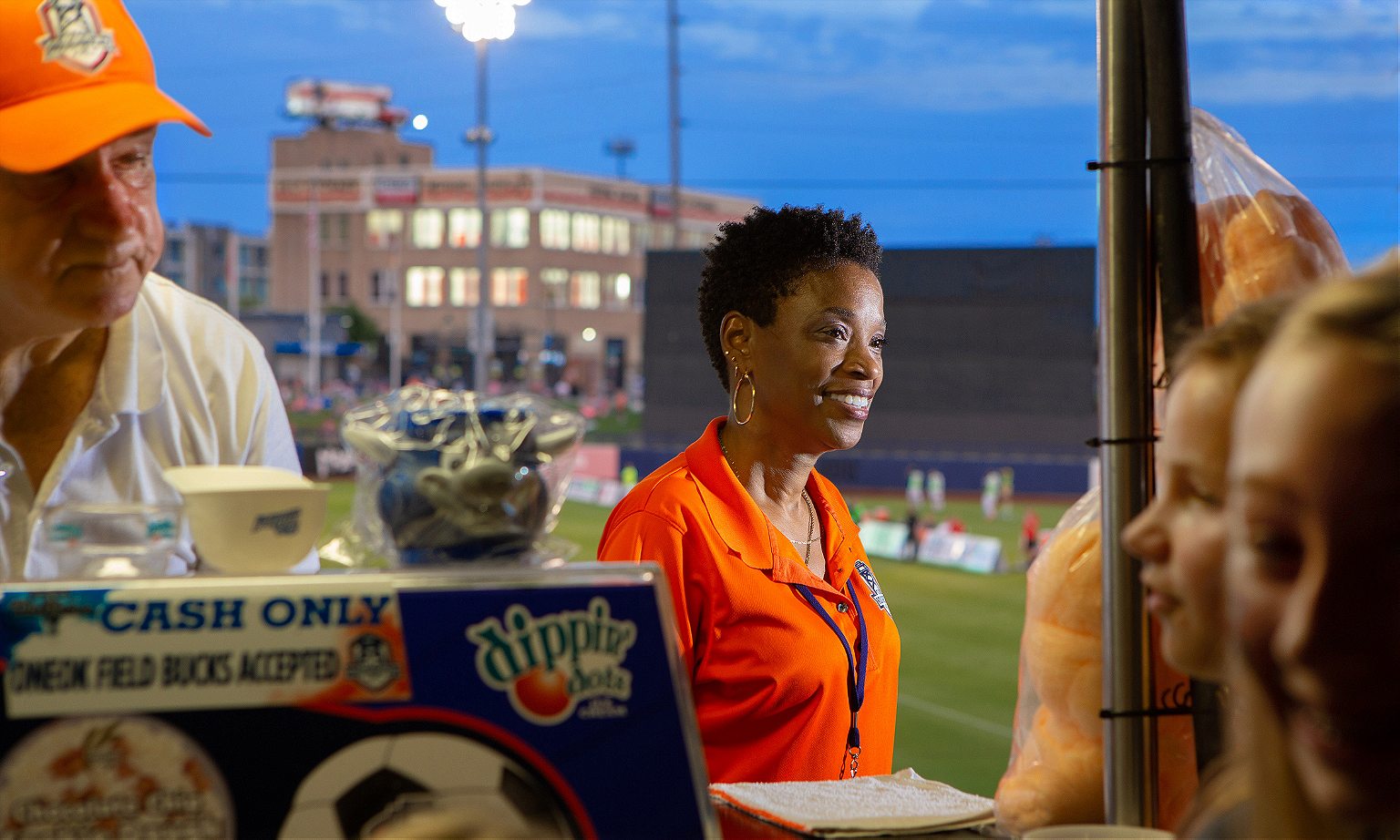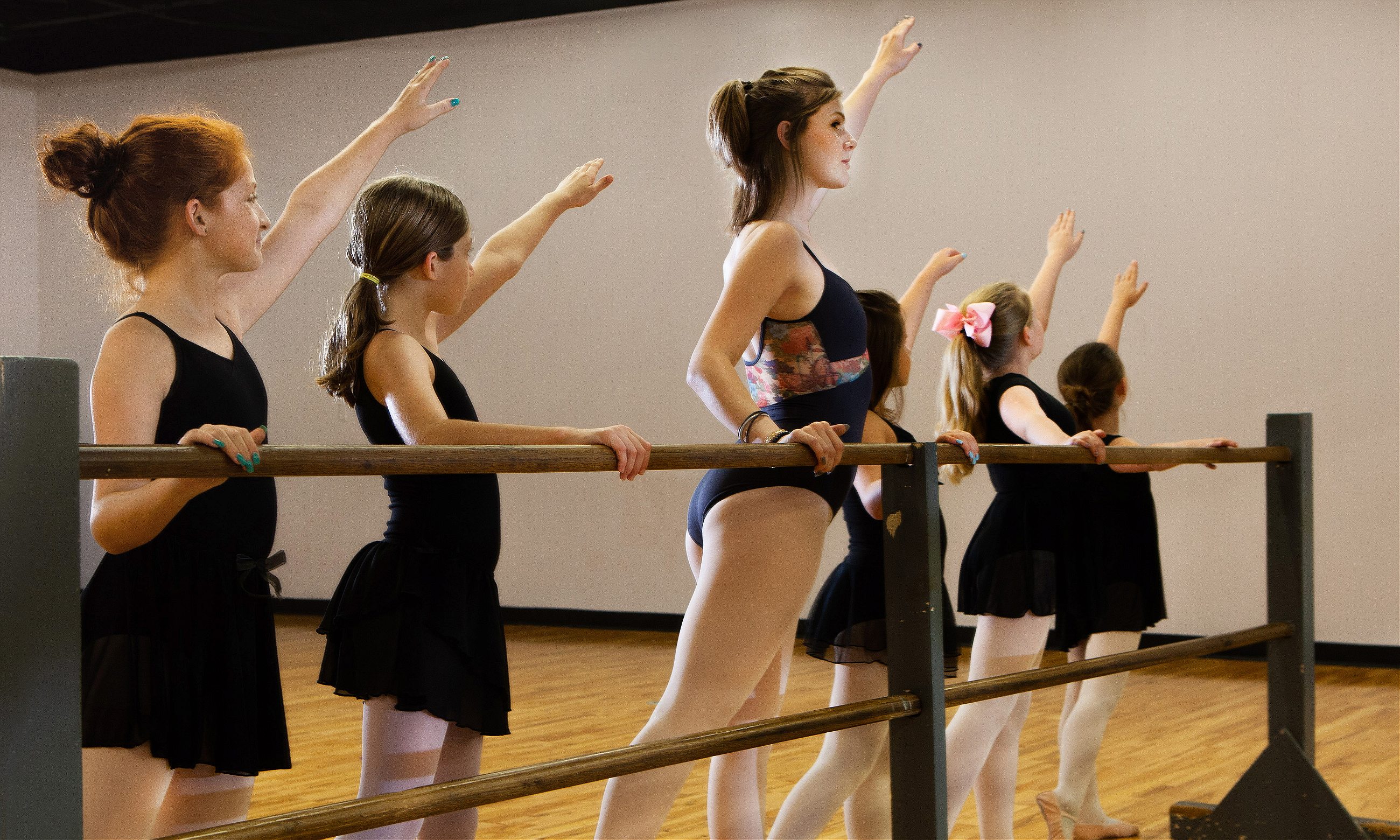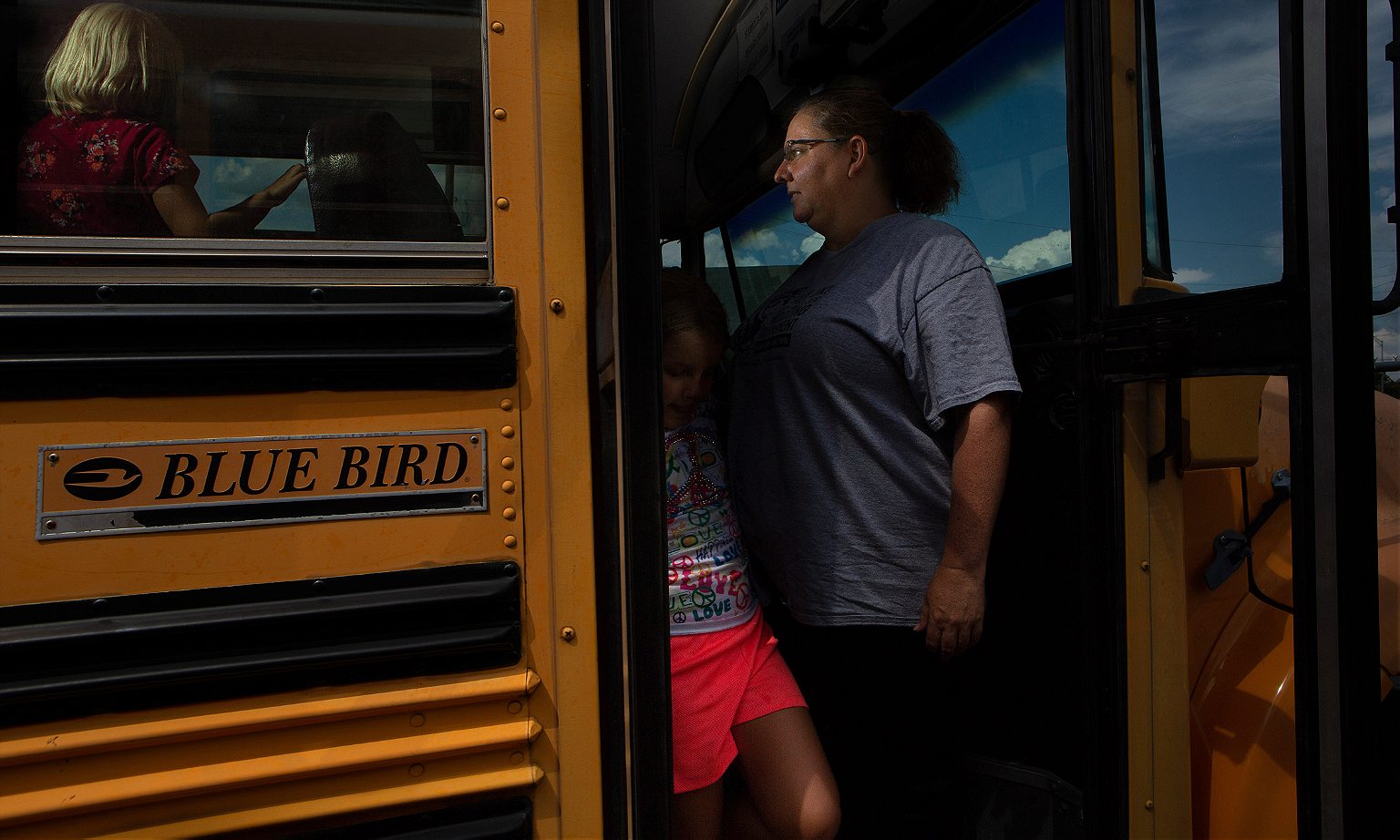Photographer Peter Rad speaks to R&K about the American teachers working side jobs just to survive.
It’s no shock to learn that America’s education system is failing to pay teachers enough. According to the Associated Press and the Bureau of Labor Statistics, one in five American teachers works a second job to make ends meet. This appalling statistic was the subject of the Guardian’s recent photo essay entitled “How I survive: American teachers and their second jobs” by Peter Rad as part of their US Teacher takeover.
Well known for his fine art and commercial photography, Rad grew up in Australia and has lived in New York for the past 20 years. His passion for social justice led him towards Masters study in social work, which he’s currently pursuing. “It was a really nice kind of meeting point of the two careers,” Rad said. “Especially now because I’m working towards that field of social work and social justice.”
Rad sat down at the Roads & Kingdoms office in Brooklyn with photo editor Cengiz Yar for a discussion.
Roads & Kingdoms: Were there any stories from this project that changed your perception of this issue at all?
Peter Rad: All of them actually. One in particular was a guy who worked at Barnes & Noble in Houston. He reminded me of an old teacher of mine in high school, who ended up being a major influence on me. He wasn’t a personal mentor, but he ran a film appreciation class for a year in the 10th grade. He was just so impacting, so inspiring for me. That class formed a lot of my kind of art and career choices. I really got into film. Film really affected the way that I painted and photographed, and I still think back to that class and to him with a lot of kind of warmth. This guy [in Houston] is also a history teacher and he’s running a film class and we talked about that, and when I listened to him speak, I could immediately relate to the same kind of inspiration in what he was putting across. He resonated for me from a personal level. But by and large, I was just appalled at how hard these people have to work.
R&K: You didn’t expect to see that?
PR: No. I know that teachers are not paid particularly well. It depends on the districts that they’re working in, but some of these people to have to work second jobs that pay as little as $8 an hour. One teacher lives at home with his parents, has five years experience teaching and gets paid the same as an incoming teacher. What I see is just kind of growing injustices and I feel for these people. They all have lives, they have families, and they’re doing great work.

R&K: How did you find the subjects for this project?
PR: The Guardian did. They went through one of the teacher’s associations. There was a seminar just before we started the shoot, and they drew from that. Initially, they started by trying to solicit teachers from that pool, but then we found that finding people who are available in a certain place at a given time was a little hard. They kind of customized their search a little bit by planning out an itinerary for me and then targeted certain cities. It was a lot of word-of-mouth reaching out to some people, and then if they were unable to having them spread the word and so forth.
R&K: Where did you end up photographing?
PR: I photographed nine teachers in four cities. There was Cape Cod, Houston, two in Oklahoma, in Bartlesville, and Tulsa. The project went for about a month. A little bit on and off, but all told, I would say about a week and a half over that time.

R&K: What was the reception like from the teachers ahead of this?
PR: It was generally positive. The one thing that we were up against to some degree, and they were up against, was that their second jobs weren’t necessarily wanting to feature their place of employment in that story. I’m guessing that they felt that it might associate them with the negativity of having to do the second job. There was one place where we had a guy who worked in a supermarket chain and the employer refused to do it, because they felt that it would make them look bad. I don’t really understand why they thought that, but certainly all the teachers were more positive about it than the schools were.
R&K: I would expect the schools to be hesitant about something like this.
PR: Right, but that wasn’t the case. Administration of the schools all kind of understand and accepted their plight. I think it would also be a bad reflection on the schools to not let their teachers have their say.
R&K: Have you done similar projects like this?
PR: I did a year-long project with the prison population in my state of Victoria in Australia. And then there have been a few over within a social justice interest throughout the years for editorial magazines, but none that have sort of had this kind of reach. The one I did in Australia was a big project and had national and international reach, but nothing this large.

R&K: How much do you think the American public was aware of this issue before these pieces came out?
PR: The response from the story has been more or less large across the board. We all know this is a problem and it’s great that people are bringing it to the forefront, but I think that it is kind of divided on political lines. The conservative thought would say that there are more important things to focus on. Yes, this is important, but it is not the highest on the list of priorities or so on. But it’s hard to find any person who says this that it is a load of crap. Everyone recognizes that teachers are important and they should get paid accordingly. So my sense is that people are aware of it. How they interpret it is another story.
R&K: Has there been any attempt to help these teachers by the general public?
PR: I don’t know. Our attention spans these days are really short. I think the follow-up is important on something like this project because media moves so quickly. Ultimately I guess it depends on the subject matter, but I haven’t really heard of any kind of specific follow-up with the teachers directly.
R&K: Is there any impetus to continue this project in any way for you?
PR: I would love to stay involved in some way. Especially if there was a chance to do an extension of this story or approach it from another angle. Anything that sort of allows the media to pick up on these problems is helpful and I’m drawn to that voice, to empower their voice.

R&K: How did plan out making these images?
PR: It was sort of like a shoot that you might do in three or four hours, but we had to do it in 45 minutes. I guess it’s something that journalists deal with a lot, but my brief from The Guardian was that they could get this done by a documentary photographer, but wanted to take it to another level or a different place where there’s a kind of an editorialized sort of voice in the visuals. They weren’t easy shoots to plan because we were we were wanting to convey the plight of the teachers and the fact that this is sort of a second job. We didn’t want to glamorize it in any way, and yet at the same time we wanted to create arresting pictures.
R&K: How did your lighting choices plan into that?
PR: I view light as a tool that functions as a language. I think that you can use light to highlight certain things in the same way that you would with words without altering the scene too much. It allows you to highlight certain information in the same way that it’s done especially in film and in visual art. You want the viewer’s eye to go to a certain place.
This was hard because we didn’t have a lot of time. In some places, we weren’t allowed to put down lighting stands so I had an assistant with handheld lighting. I would guide them and then move around. I was directing people who are not actors, but still wanting to convey some sort of feeling from them. Technically, it wasn’t the easiest shoot.


R&K: How did your approach differ from the other stories like this?
PR: The New York Times story took a totally different approach with their photography. It’s much more of available light and portrait situations. There’s no right or wrong in these things, but for me it was kind of like wanting to clap my hands and say, “Hey, hey … Look at this, look at this!” I wanted people to pay attention. We respond so much to visuals now, banners and ads, and things like that. People are always looking at things on their little screens. So I wanted the shots to have an immediate drama, again, without it being kind of theatrical, or utterly theatrical, because it’s a serious situation.
I think this he subject matter deserves that kind of impact. That’s what we’re looking for. For the person to be drawn to it, whether they’re interested or not, whether they came in with interest or not.
I would like this format to be embraced by more media in different context. I think that social justice is a growing field and people’s awareness is increasing. We see so much commerce in the media and it’d be nice if we could see more of these kind of stories injected into blogs and bringing these things into general readership so that people don’t have to go looking. That’s a grand kind of undertaking, but whichever way we do our bit, and that’s what I’m trying to do.






